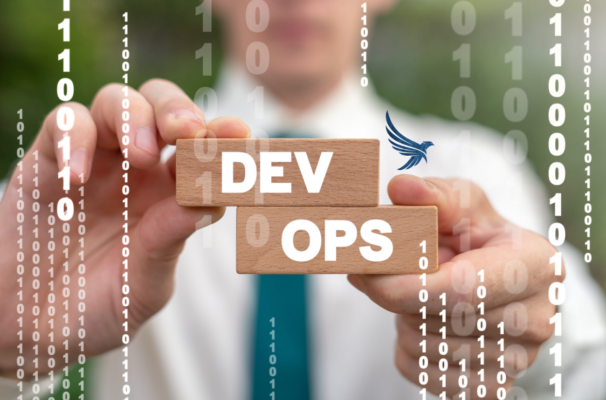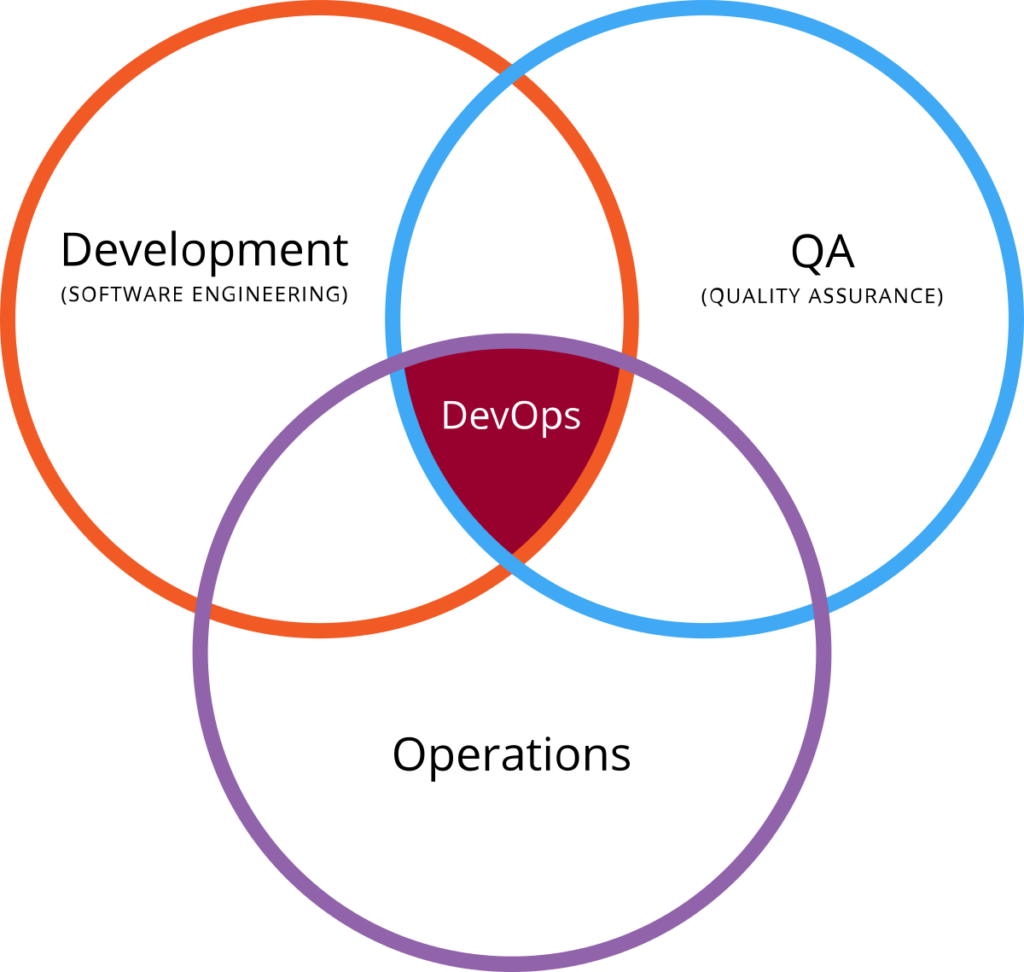
DevOps Implementation Steps
This post is all about how to implement DevOps. We’re going to clarify the definitions of DevOps, and highlight the pros and cons of this strategy. And go into detail about how you should be implementing it. We’ll also touch on some common arguments against using this software development process.
Information technology is evolving at a breakneck speed but this is not the right time to take your eye off track. You need to address all new opportunities and adopt a DevOps implementation strategy before it’s too late. Find out in this article what are the best ways for you to start a DevOps implementation strategy and make your IT future-proof.
DevOps is a term that, in recent years, has been used even more so than “Agile Development” or “Continuous Deployment” due to its effectiveness. As with many “new” terms and approaches, there is a lot of confusion about what DevOps is. And how it’s implemented. DevOps is a natural progression of Agile Development most of the time.
It’s not a specific devops methodology or software development process. But instead refers to the culture that comes out of a development team working closely with the QA testers and members of IT Operations. It’s all about improving communication between these different stakeholders to work together towards creating better software faster.
What Is DevOps?
You might be asking yourself, “What is DevOps?” Well, it’s a software development and an operational practice that brings together the two traditional silos of the software industry: Development and IT Operations. It’s a movement to bring these two groups together in order to streamline their tasks with the ultimate goal being faster delivery of higher software quality products. Other, Amazon Web Services (AWS) is a collection of remote computing services. It offers computing power, database storage, content delivery, and other functionality that programmers use to build their software products.
DevOps Strategy and Successful Implementation

“DevOps is a set of practices how to bring and integrate development and operations to speed up time. To market, improve quality, reduce cost, and achieve a ‘continuous delivery’ model. It has become the preferred process for building software in today’s enterprise.”
Since 2011, DevOps has been all over the internet. Companies like
So, where do you begin?
CICD Implementation Process
The CICD process begins by gathering requirements, which are then transformed into a design, which is then transformed into software that creates the desired result. This design stage entails creating the steps that an organization’s employees will execute to take data from one form and format it to another. This activity aims to collect input data and transform it according to pre-defined guidelines. And transfer it for further processing or storage in a different system or environmental branches.
The following steps are typically used to design the next generation of the CICD process:
- Define project requirements and scope
- Conduct timeline estimation
- Secure a project manager and sponsor
- Conduct project team selection
- Identify training needs and sources for training personnel.
- Ensure that the design has adequate documentation, including a list of technical requirements, how the solution will be implemented, and how integration will occur with existing systems/databases.
Initiating The DevOps Culture
Many companies are beginning to appreciate the value of DevOps, an umbrella term for the new way software development has shifted towards an agile and collaborative process. This approach pushes developers to work closely with IT departments and plan their projects with an eye toward shorter time-frames and less variability in their outcomes. Numerous organizations have reaped the benefits of this new method as it adds considerable value to any product created by large teams that are spread out across multiple time zones. In choosing a DevOps program, it is important to recognize that this approach can be difficult for some companies to grasp.
When the term “DevOps” was first coined, several challenges were associated with adopting this new process. However, several innovative and useful technologies have been created to help make this process as easy as possible. For example, tools such as Puppet and Chef have helped companies undergo rapid iterations on features and code because they allow teams to manage IT resources better than ever before.
Containerization
Containers are becoming increasingly popular. It’s because containers have allowed for the deployment of applications without the need to worry about the operating system or host. Running a container is generally much faster than running an application on a virtual machine. They are more lightweight and take up fewer resources, perfect for microservices architecture.
Containers are ideal for microservices as they do not require a hypervisor or an OS. The applications can run directly on the host operating system. Containers provide developers with a virtualized environment to build and test applications and then ship them off to production once they are ready. There is no need to worry about what the underlying operating system or hardware looks like, as the container will run on any platform that supports Docker.
Integrating DevOps Tools
DevOps tools are services and technologies that build on the foundation of IT automation. A DevOps tool is a program or software application responsible for automating tasks such as installing, configuring, managing, monitoring, and integrating applications. DevOps tools can be viewed as an IT automation toolset. The use cases for DevOps tools are wide-ranging; they include continuous integration and continuous deployment, to name just two examples. And continuous delivery takes up from where continuous integration ends. Continuous integration enables DevOps teams to save a chunk of their time in the development cycle. The DevOps team follows continuous integration and delivery. From configuration management to continuous delivery platforms, pick tools that have known networks. DevOps tools run on operating systems such as Windows and Linux.
DevOps tools are designed to help create a continuous delivery pipeline for applications built and deployed on the cloud. One way you can do this is with continuous monitoring. The aim is to accelerate software development processes by automating tasks such as performing code quality tests, analyzing static code analysis and security teams vulnerabilities, building, testing, deploying, and monitoring mobile and web applications, and ensuring compliance with organizational policies. DevOps tools can automate quality assurance activities in the testing phase. Such as load testing and functional testing.
Monitoring The Application Performance
The author provides a list of tools used to track application performance in this blog post.
Most importantly, they provide a brief introduction and background on how monitoring software can solve business problems. They also discuss key metrics such as CPU utilization and interpreting these data points during a production deployment. The blog uses anecdotes from one company that successfully used monitoring software to improve their deployment process as an example for other companies. Application performance monitoring (APM) is a term used to describe the process of collecting, analyzing, and reporting performance data related to an application. It can be used as a framework to monitor and troubleshoot any application’s performance issues/errors.
Continuous Testing

Software testing is a vast and ever-evolving field, but there is one that has steadily grown in popularity: Continuous Testing. Continuous testing has been around for years, the benefits of which the industry has come to understand more and more. But what exactly is it?
For any company, the testing environment they are thinking of investing in is a necessary step before making a decision. Variations in testing environment could be physical or virtual and may vary from project to project depending on how many iterations are required by the development team, time constraints, etc. To cut straight to the point: continuous testing aims to find errors earlier in the development process by extensively running tests on an application. At the same time, it’s still being developed. Uniformity and similarity in development, testing, and production environments are absolute essentials. Checking to see if your automated testing scripts are actually working can be a full-time job. There’s no way around it, you need humans checking to make sure that the system is doing what it’s supposed to do. That’s where manual testing comes in.
Once a code clears different QA test cases, the Operation team deploys the code in the production environment. Powers continuous testing in your DevOps cloud environment.
Start Your DevOps Implementation Today
DevOps has been widely adopted by organizations of all shapes and sizes. It is one of the most sought-after tech trends in recent years because it optimizes the development process. It improves collaboration between developers.
The DevOps implementation approach is categorized into 3 main stages of the software development life cycle: Build (DevOps Continuous Integration) Test (DevOps Continuous Testing) Release (DevOps Continuous Delivery). The DevOps model enables your developers and operations teams to achieve these results. It helps in your DevOps Journey by Integrating with tools like Saucelabs, Jira, and Github.
The IT team enables faster time to market, reduces iteration times, and provides more software reliability. DevOps consultants use various tools for each of the relevant phases of the DevOps process.
Conclusion [Best Strategy For Implementing DevOps]
When you begin to understand the idea of a DevOps pipeline, it can be very useful. One of the best ways to implement DevOps is through collaboration and communication. We can all learn from each other and work together to share knowledge, experience, and ideas. The modern customer experience is fraught with uncertainties and unknowns.
Technology has forever changed the way we work and live our lives, but it hasn’t always been well received. A cross-functional team can be subdivided into smaller units based on the type of work that needs to be accomplished. The term functional here refers to specific knowledge, or expertise within an area, as opposed to expertise in dealing with people or business operations.
Get in touch with our DevOps specialists today from Cloudstorks to start your digital transformation.

Comments are closed.